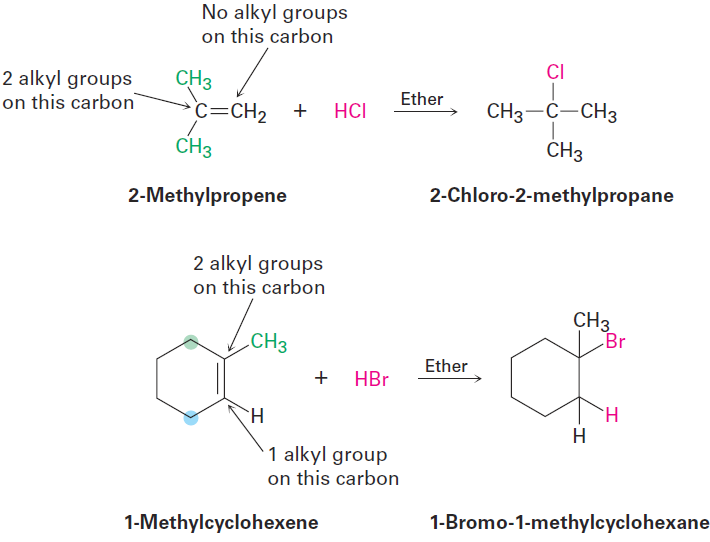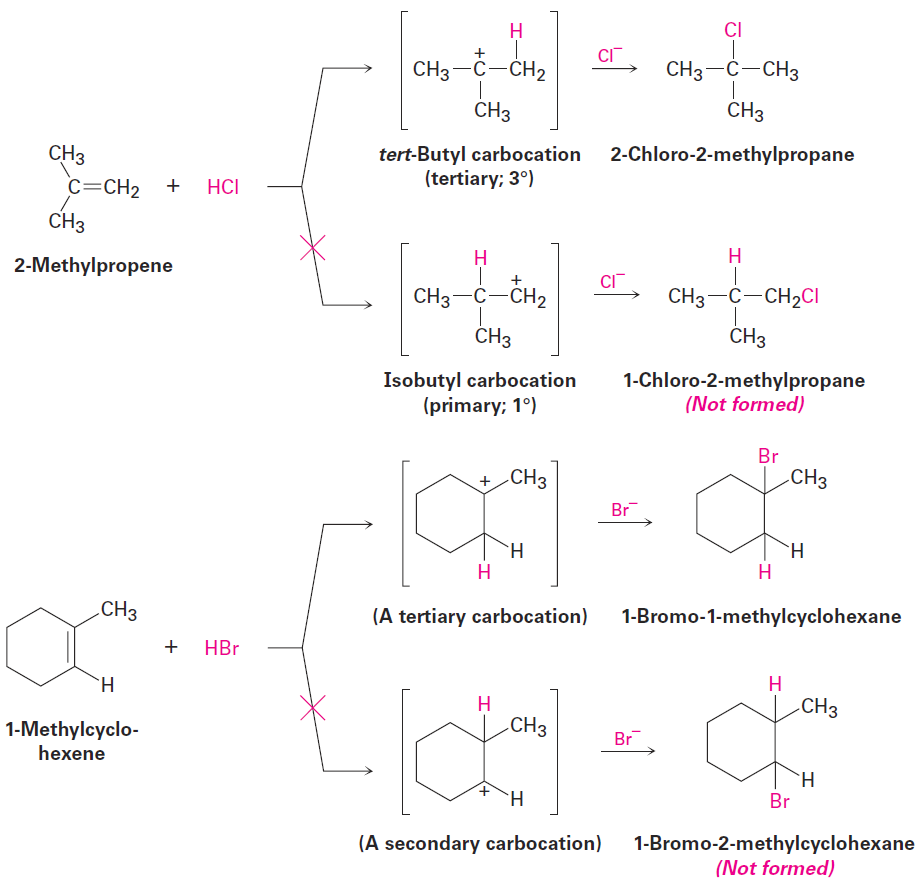


 علم الكيمياء
علم الكيمياء 
 الكيمياء التحليلية
الكيمياء التحليلية 
 الكيمياء الحياتية
الكيمياء الحياتية 
 الكيمياء العضوية
الكيمياء العضوية 
 الكيمياء الفيزيائية
الكيمياء الفيزيائية
 الكيمياء اللاعضوية
الكيمياء اللاعضوية 
 مواضيع اخرى في الكيمياء
مواضيع اخرى في الكيمياء
 الكيمياء الصناعية
الكيمياء الصناعية |
Read More
Date: 18-1-2020
Date: 2-10-2020
Date: 23-5-2017
|
Orientation of Electrophilic Additions: Markovnikov’s Rule
Look carefully at the electrophilic addition reactions shown in the previous section. In each case, an unsymmetrically substituted alkene gives a single addition product rather than the mixture that might be expected. For example, 2-methylpropene might react with HCl to give both 2-chloro-2-methylpropane and 1-chloro-2-methylpropane, but it doesn’t. It gives only 2-chloro-2-methylpropane as the sole product. Similarly, it’s invariably the case in biological alkene addition reactions that only a single product is formed. We say that such reactions are regiospecific (ree-jee-oh-specific) when only one of two possible orientations of an addition occurs.

After looking at the results of many such reactions, the Russian chemist Vladimir Markovnikov proposed in 1869 what has become known as Markovnikov’s rule.
Markovnikov’s rule
In the addition of HX to an alkene, the H attaches to the carbon with fewer alkyl substituents and the X attaches to the carbon with more alkyl substituents.

When both double-bonded carbon atoms have the same degree of substitution, a mixture of addition products results.

Because carbocations are involved as intermediates in these electrophilic addition reactions, Markovnikov’s rule can be restated in the following way:
Markovnikov’s rule (restated)
In the addition of HX to an alkene, the more highly substituted carbocation
is formed as the intermediate rather than the less highly substituted one. For example, addition of H+ to 2-methylpropene yields the intermediate tertiary carbocation rather than the alternative primary carbocation, and addition to 1-methylcyclohexene yields a tertiary cation rather than a secondary one. Why should this be?




|
|
|
|
دراسة يابانية لتقليل مخاطر أمراض المواليد منخفضي الوزن
|
|
|
|
|
|
|
اكتشاف أكبر مرجان في العالم قبالة سواحل جزر سليمان
|
|
|
|
|
|
|
المجمع العلمي ينظّم ندوة حوارية حول مفهوم العولمة الرقمية في بابل
|
|
|